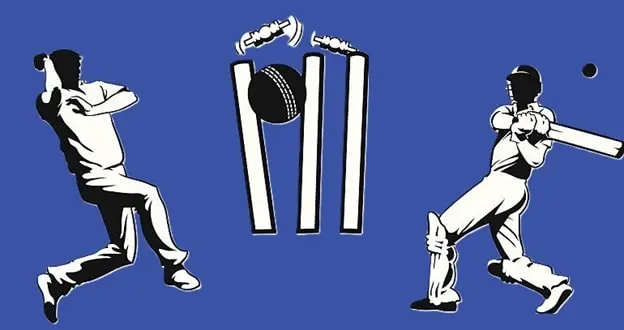Let’s say you must have heard a lot about cricket, and you have seen how crazy some fans are about this particular sport, that’s the very reason why you want to start watching or playing cricket on your own, right? But before that, you must know about the basic rules of cricket, correct? Well, worry not anymore, we are here with a list of the 10 basic rules of cricket for beginners, just read these, and you’ll be good to go. Alright then, let’s get going with these rules, shall we?
Basic Rules of Cricket

1. The Objective of the Game
Cricket, at its core, is a simple game: one team will bat, attempting to score as many runs as possible. A run is the basic unit of scoring, and teams will look to accumulate as many of these as they can through various means, as we’ll explore later. The team with the highest number of runs at the end of the match wins, as simple as that.
2. Players and Positions
With each cricket team consisting of 11 players, one of which is the captain, it’s a game jam-packed with every type of player. The team is made up of a combination of batsmen, bowlers, and a wicketkeeper, each with specific roles. Batsmen are in to score runs; bowlers are the opposite, looking to restrict runs and take wickets; and the wicketkeeper’s job involves guarding the stumps, waiting to catch the ball or run out a batsman.
3. Equipment In cricket
The essential equipment is minimal: a bat, ball and wickets. The wooden bat has a flat face and a ridge on the back for strength. The cork ball, covered in leather, was developed to bounce when it was bowled. The wickets consist of three vertical stumps and two horizontal bails, and are the object of a bowler’s desires as we’ll see shortly.
4. The Cricket Pitch
The cricket pitch is a 22-yard-long rectangular strip of ground. This is where most of the action happens with both batting and bowling taking place, and where the batsmen will run between to score their runs.
5. Scoring Runs
Runs may be scored from all of the above, the most simple being that the two batsmen run to the opposite end of the pitch after the batsman has hit the ball. Additional ‘multiplier’ runs are awarded if the ball crosses the boundary after the batsman has hit it, four runs if the ball has first touched the ground before it crosses the boundary and six runs if it has not. You’ll notice a recurring theme here, in that all of the basics of cricket are worth very few points at their core.
6. Overs and Bowling
An over consists of six legal deliveries bowled by a bowler. The bowler’s objective is to both restrict scoring and dismiss the batsman facing him/her. Bowling is a skilled and strategic craft, as it requires the bowler to attempt to outwit the batsman, while also maintaining precision.
7. Batting and Dismissals
While batting, players aim to score runs and protect their stumps, which results in being dismissed. Dismissals occur in a variety of ways. The most common dismissals are bowled, caught, leg before wicket (LBW), stumped, and run out. Each method adds a unique layer of strategy and excitement to the game.
8. Fielding and Wicket-keeping
Fielders lend their bowler support by catching the ball, stopping runs, and attempting run-outs. The wicketkeeper plays such a vital role in the game that it might seem as if the game is specifically organized to suit the unique set of skills that these player’s hold. Since wicketkeepers are positioned behind the stumps, they are able to catch balls that pass the batsman, as well as to stump the batsman by catching a ball that the batsman has missed.
9. Types of Matches
Cricket comes in a wide range of different formats, ranging from Test matches, which can last up to five days, to One Day Internationals (ODIs), and T20s. Each format has its own set of rules and strategies while catering to your different preferences and schedules.
10. Umpires and Decisions
Umpires ensure that the rules are adhered to, and they make all of the crucial decisions that can affect the outcome of the game. This is essential as their decisions keep the game fair and ensure that the conduct of the players is sportsmanlike, you know?
Final Thoughts
That’s pretty much it for now. See, there are other rules to the game as well, but let’s leave that for some other time. If you have read these rules and understood them as a beginner should, then you are pretty much good to go. So yeah, enjoy that cricket match you wanted to play or watch with your friends, we will see you in the next one.
Hina Abbasi is Editor and a passionate sports and entertainment content writer at WinnersMaze.com. Hina’s expertise spans across a wide range of sports, and interest in many TV shows allowing her to deliver insightful analysis and compelling stories that resonate with readers.

